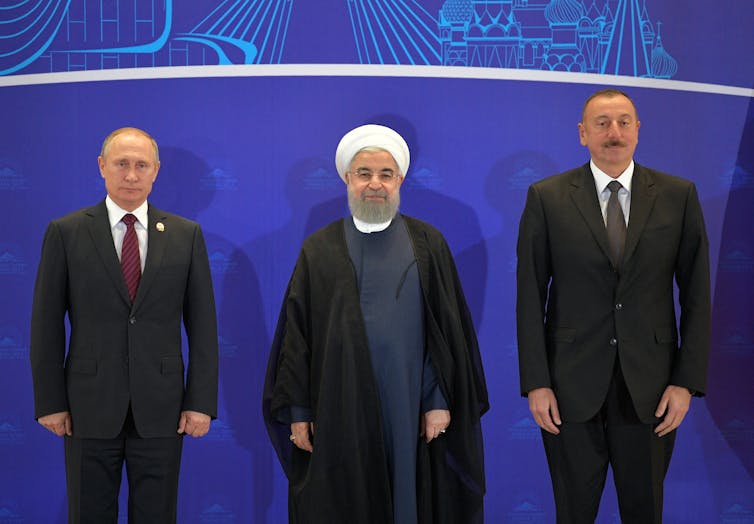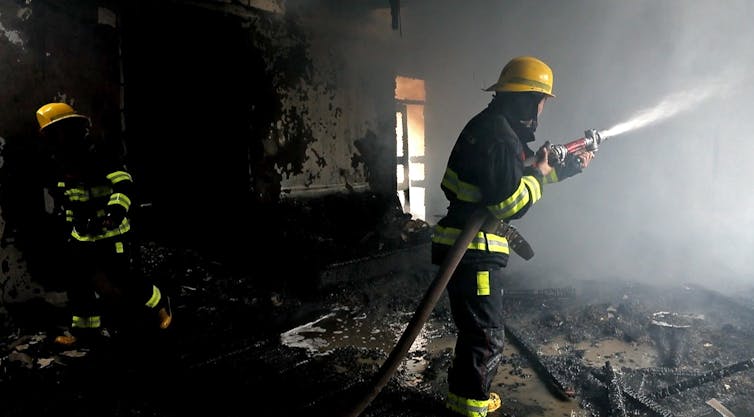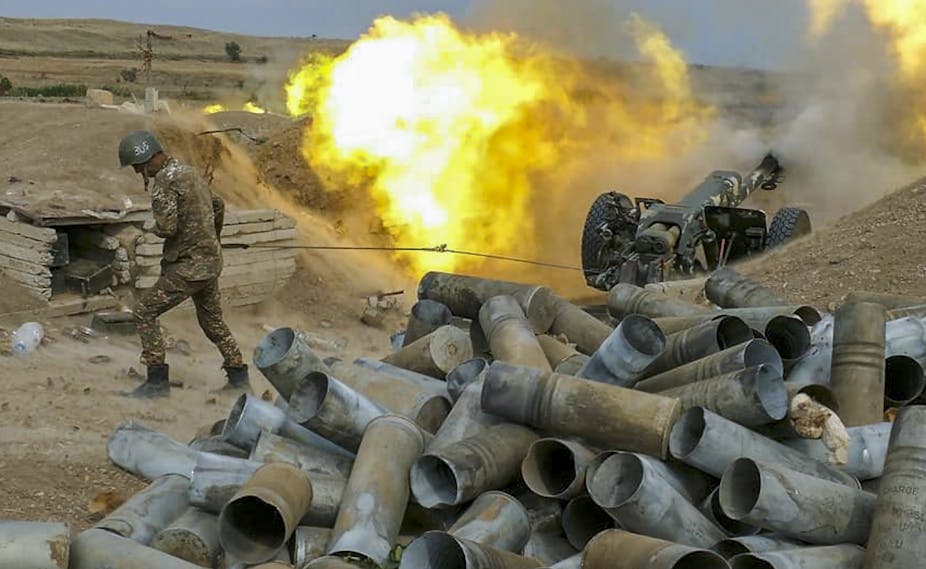Fighting between Armenia and Azerbaijan intensified in early October over Nagorno-Karabakh, the disputed region in the South Caucasus at the centre of a conflict that has lasted for more than three decades.
The South Caucasus is sandwiched between Russia to the north, Iran to the south and Turkey to the west. Out of these three regional powers, Turkey’s vocal and military support for Azerbaijan has bolstered Baku’s confidence to refuse mediation in the conflict. Meanwhile, Moscow – which has historically been an important mediator in this conflict – is also committed to protect Armenia under the Collective Security Treaty Organisation, a regional security alliance.
Iran, however, has adopted an official neutral stance and has repeatedly offered to mediate over the past three decades. It’s doing the same today, with Iranian officials stating they are working on a peace plan.
Read more: Nagorno-Karabakh: are Armenia and Azerbaijan sliding towards all-out war?
Mediation efforts
The first war over Nagorno-Karabakh broke out in the late 1980s, resulting in Azerbaijan losing 20% of its territory to Armenia.
Tehran made an extensive effort to broker a ceasefire in 1992, only to see it violated by the Armenian militia within hours, discrediting Iran’s role as a mediator.
Although another ceasefire was eventually brokered in 1994, numerous rounds of negotiations, as well as regional and international mediation, most notably by the OSCE Minsk group, have not led to peace – or even a partial resolution of the dispute. While conflict has repeatedly flared up along the front line since then, for example in 2016, the current escalation, which began on September 27, is by far the most serious.
Iran is in no real position to mediate now, particularly given its own turbulent relationship with Baku, as well as international sensitivity over Iran’s increased regional influence. The only reason Iran repeats its offer of mediation is to confirm to Armenia and Azerbaijan – and their respective ethnic minorities and supporters inside Iran – that Tehran remains neutral. Such neutrality is important for Iran’s own domestic stability.

Historic ties
Until the early 19th century, Georgia, Armenia and the territories of the present-day Republic of Azerbaijan (known then as Arran) were under Persian control. Iran then lost these territories to Russia following its defeats in two wars.
The 1918 collapse of Russia’s Tsarist empire and the weakening of Moscow’s hold on Arran provided the opportunity for nationalist parties. Supported by the Ottoman Empire, they created the Azerbaijan Democratic Republic, which was integrated into the Soviet Union in 1920.
While, prior to 1918, there had been no political entity on the north of the Aras river with the name Azerbaijan, the people of Arran shared Turkic ethnicity and language with those in the north-western provinces of Iran, historically called Eastern and Western Azarbaijan.
This makes today’s 9 million population of Azerbaijan brethren of 16% of Iran’s population – another 20 million people. Iran is also home to more than 100,000 highly respected and well-integrated Armenians. They have strong and at times useful connections to the global Armenian diaspora, which has influential lobbies in western countries, especially the US.
With such an ethnic mix, any official support by Tehran for either Armenia or Azerbaijan in the Nagorno-Karabach conflict could deepen the social faultlines to the point of conflict. It would also add to the various social dilemmas that the Iranian state is already facing, arising from economic hardship caused by US sanctions, rampant corruption and mismanagement, as well as public dissatisfaction with the state’s repressive policies.
At a time when social cohesion is in tatters, taking sides could easily result in widening ethnic divisions that could put Iran’s political and territorial integrity at risk.

Wary of Baku
As I have explained in my own research, with a shared Shia religion and civilisational background, Iran could have been Azerbaijan’s natural ally – especially as Armenia is a non-Muslim country. But Azerbaijan’s constant expansionist approach towards Iranian territories since its independence makes such an alliance highly unlikely, no matter who rules Iran.
Azerbaijan has made significant investments in promoting separatist ideas among Turkic Iranians and maintained an appetite for integrating the Iranian provinces of Eastern and Western Azarbaijan into the republic. This has been one of the main reasons why Iran’s ruling Shia theocracy is reluctant to take Azerbaijan’s side, despite the fact that the majority of Azerbaijan’s population is also Shia.
Baku’s partnerships with the US and Israel, as well as its secular government with an adamant resistance to any influence from Iran, also increase the Islamic Republic’s hesitance to support Azerbaijan.
Armenia, on the other hand, has not demonstrated any expansionist policies towards Iranian territories. Nor has it developed relations with Iran’s nemeses – the US, Israel and Saudi Arabia – to a degree that undermines its cordial relations with Tehran. Still, it would be counter-intuitive for Iran’s Shia theocracy to overtly ally with a Christian republic against another Shia majority country.
This is why the best option for protecting Iran’s security and stability is for Tehran to maintain its neutral stance while supporting international initiatives to resolve the conflict.

